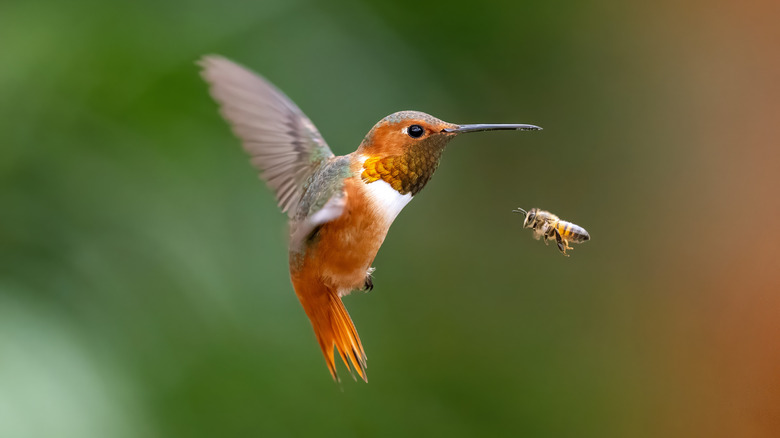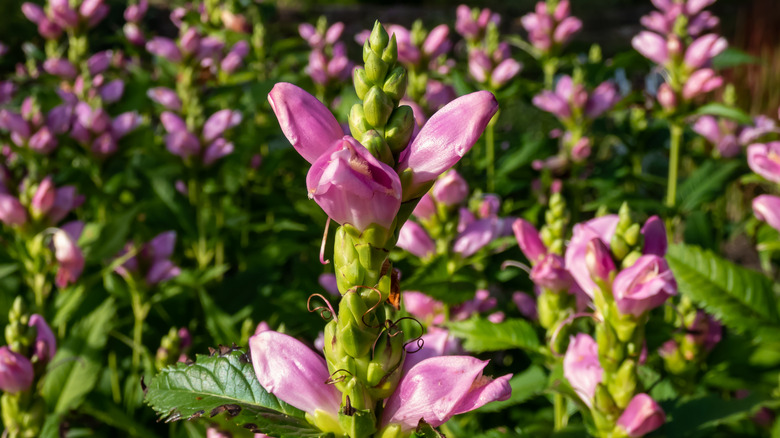Attract Hummingbirds & Bees With A Beautiful Perennial Flower That Loves Damp Soil
Turtlehead (Chelone spp) is a welcome sight for hummingbirds and other pollinators in the autumn, when its stunning flowers start to bloom. Bumblebees especially love its snapdragon-shaped blossoms, which they can zip into with ease. White turtlehead (Chelone glabra) is the principal food source for the caterpillars of the Baltimore checkerspot butterfly, whose populations are rapidly decreasing. It's popular among common buckeye caterpillars as well. All species of turtlehead thrive in soggy soil. In nature, this perennial wildflower grows in marshes, so it's an ideal rain garden plant and great choice for landscaping beside ponds and streams.
Since all turtlehead species are native to North America, they are accustomed to most of the continent's growing zones and excel in USDA hardiness zones 3 through 8, though red turtlehead (Chelone obliqua) is happy in zone 9 as well. To grow this pollinator-friendly flower in your yard, select a planting site that gets full sun, at least two hours of direct sunshine each day, though some can also thrive in partial shade, two to six hours of direct sunshine. Turtlehead plants can grow to a width of about 2 feet, so leave a few feet between each plant to prevent crowding and promote air circulation. Since it can reach a height of 3 or 4 feet, plan on staking the plant as it grows so it doesn't fall down. Pink turtlehead (Chelone lyonii) is especially fond of cooling afternoon shade, but shade can make it more likely to flop over as it gains height. To help it achieve a bushier shape, pinch the stems as they develop.
Companion plants for turtlehead in a rain or pollinator garden
Turtlehead is an excellent flower for a pollinator garden since it appeals to such a wide range of nectar seekers. When adding it to a floral food court for pollinators, grow it behind shorter plants and beside those that favor similar growing conditions. Tolerating wetness is the most important requirement for turtlehead companions. If you put turtlehead near yarrow or another plant that dislikes soggy soil, you'll need to pay more attention to the water intake of both. Turtlehead seeks soil that's neutral to alkaline, so it may struggle if the soil's pH is below 6.0 and can be tricky to grow adjacent to plants that crave acidic soil — azaleas, for instance. If a soil test shows that the pH is too low, adding baking soda can make the soil less acidic.
If you're building a pollinator garden from scratch, incorporate plants that make good neighbors for turtlehead and good food sources for bees, butterflies, and hummingbirds. Two plants that meet these criteria are New England aster (Symphyotrichum novae-angliae) and Joe Pye weed (Eutrochium maculatum). New England aster attracts butterflies and specialist pollinators such as the aster mining bee. It's hardy in most of the same growing zones as turtlehead, likes full sun as well as partial shade, and thrives in moist soil as long as it doesn't get waterlogged. Joe Pye weed likes damp and even wet soil. It thrives in the same growing regions as turtlehead and even craves alkaline soil. Plus, it's likely to bring honeybees and butterflies to your garden.

